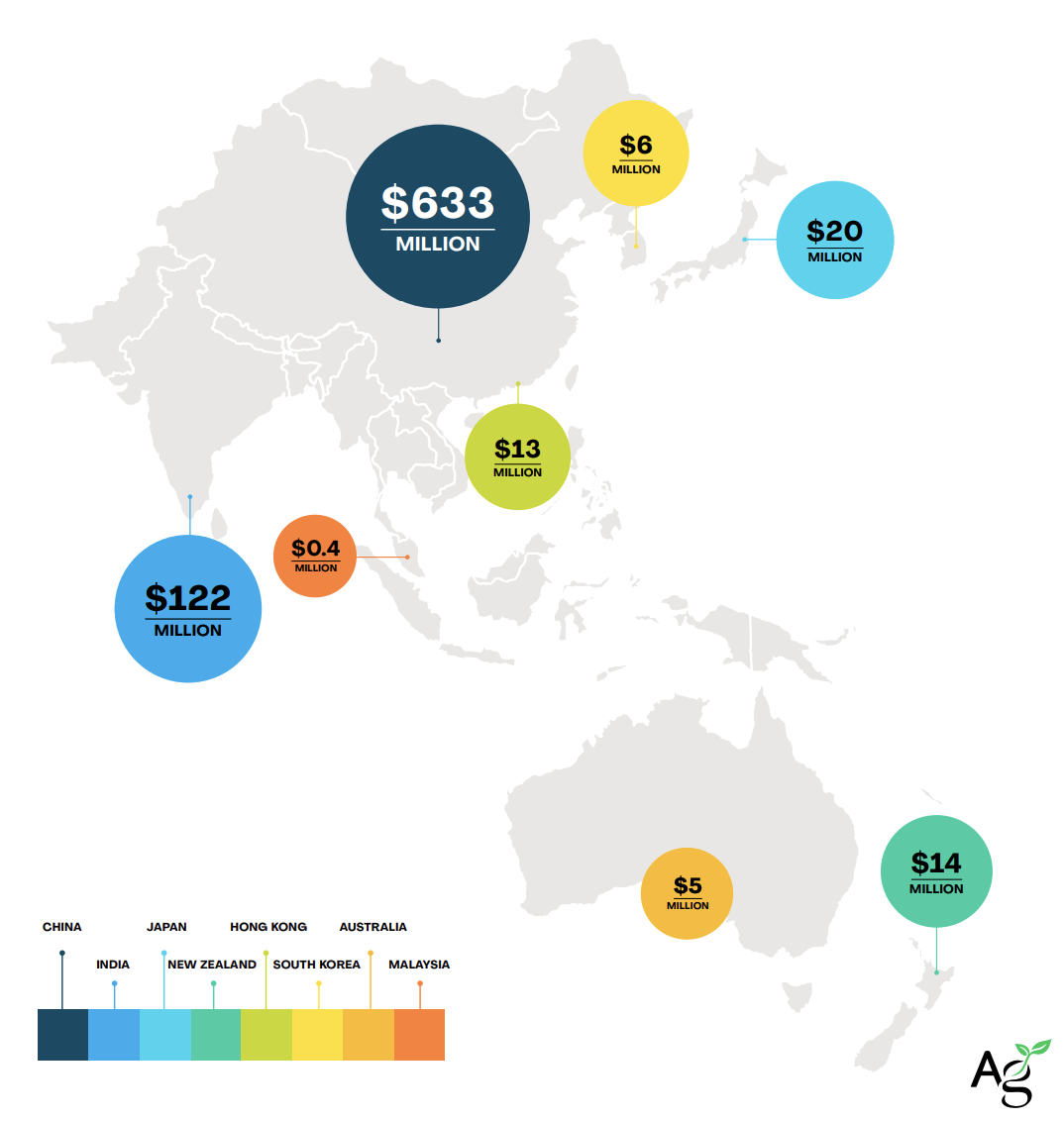
Châtenay-Malabry (FR - 92290), November 13, 2023
EFITA newsletter / 1082 - European Federation for Information Technology
in Agriculture, Food and the Environment
The informatique-agricole.org site offers you the possibility of subscribing
the RSS feeds of its two newsletters
See RSS feeds
to implement to ensure that you continue to receive this newsletter
To unsubscribe
this newsletter, please contact me directely: guy.waksman(a)laposte.net
if this
link Unsubscribe does not work.

To correspond with me (GW), please use this address: guy.waksman(a)laposte.net
To subscribe the efita newsletter (please ask your friends and colleagues
to test this link)
Efita
Newsletters subscription
Next concert concert (GW: Bass clarinet) / Prochain concert de la Lyre
du Plessis-Robinson (GW : Clarinette basse)
TECH HUB LIVE 2024
July 29-31 in Des Moines
Join us at the 4th annual Tech Hub LIVE Conference and Expo.
Explore the latest tech innovations and connect with industry stakeholders
committed to leveraging the latest tech innovations for practical business
advantages on the farm.
See techhublive.com
Before computers: During haymaking at Loucrup (Hautes Pyrénées) / Avant
l'informatique : Pendant les foins à Loucrup (Hautes-Pyrénées)
|
|
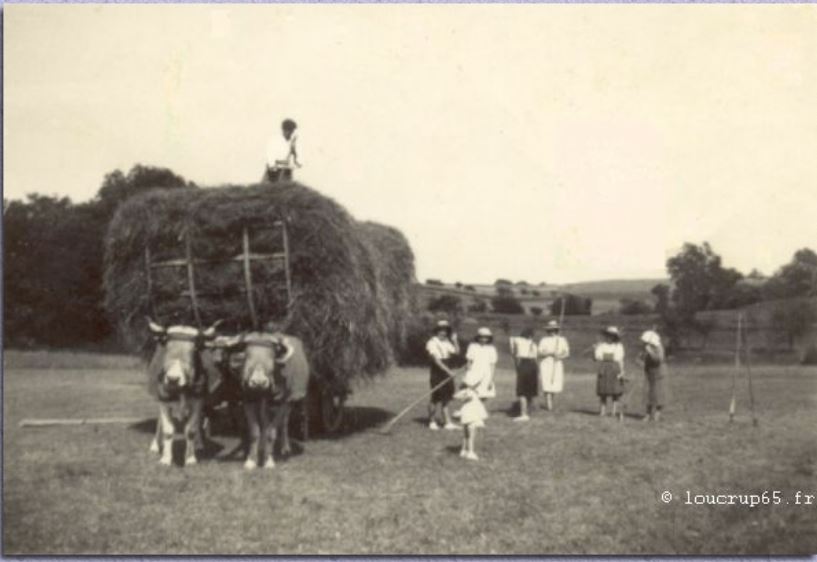 |
|
Weekly newsletters about ICT in Agriculture in English and French
Both newsletters have around 5000 subscribers.
>>> Last weekly EFITA Newsletters in English (created in 1999)
Efita
Newsletters
>>> Last weekly AFIA Newsletters in French (created more than
20 years ago in 1997) Afia
Newsletters
>>> Statistics
for the latest efita newsletter
>>> Latest
issue of the afia newsletter
>>> Latest
available satistics for the afia newsletter
FutureFarming.com
> Agritechnica 2023: more convenience and insight through precision
At the upcoming Agritechnica in Hanover, automation, smart farming, and
robotics are more prominent than ever.
> Weed control: Kuhn enters the field of mechanical weed control
> Electric tractor: New electric tractor from German start-up Tadus
> Ethanol engine: John Deere presents ethanol engine at Agritechnica
> Field robot: VTE field robot can be towed by a tractor
> Expert opinion: ‘Precision technology as a tool against nitrogen
leaching’
In the green transition of agriculture, optimal nitrogen utilization is
a crucial focal point. Read the expert opinion of Jesper Riber Nielsen,
Director, Digital Crops, SEGES Innovation.
> Market information: Nearly 11 percent increase in revenue for AGCO
> Pest control: M3 Agriculture Technologies: $ 1 million to use
X-Ray innovation in pest control
> quaSpy: Maximizing Yield, Minimizing Costs in AgTech
Dive into the world of AquaSpy, where technology meets agriculture to
optimize water usage and increase yields.
> Watch spotlight: Voices of Women in Ag Tech: Ambassador Profile on
ICIT's Joyce Hunter
We bring you exclusive insights from our inspirational ambassadors and
other women leading the way forward in ag tech.
> Spot Spray Solutions Gain Market Share in North America
The interest in spot spray solutions coupled with a growing number of
providers is resulting in faster adoption throughout North America.
> AquaSpy: Maximizing Yield, Minimizing Costs in AgTech
Dive into the world of AquaSpy, where technology meets agriculture to
optimize water usage and increase yields. With innovative soil moisture
monitoring and data-driven insights, farmers can achieve maximum results
while minimizing input expenses. AquaSpy is reshaping the future of irrigation.
> Women in Ag Tech: Join the Community!
Women in Ag Tech aims to provide a platform for women in ag tech to connect,
engage, and build a community. Complete our online interest form and join
the community of empowered women in ag tech! Submit Interest Form.
> Why a Farmer Adopts – or Doesn’t Adopt – Precision Technology
A new study gives farmers’ viewpoints on the most influential factor behind
adopting new technologies and practices: profitability.
> Adaviv: How We Can Empower the Next Generation of Ag Leaders and
Workers Through Technology
If we are to truly empower the ag sector with technology, it must be made
to engage a new generation of workers.
> Sustainability in Agriculture: How the Industry Is Answering the
Call to Produce More with Less
Producing more with less will be a key goal in the new era of agriculture.
> Estonian AgTech Company eAgronom Expands to Czechia, Romania, and
Ukraine
The company’s soil monitoring technology and carbon credit program will
be introduced to the region with the help of local partners.
> The power of precision farming
More than 90 % of Denmark’s agricultural land is managed using digital
tools for crop and cultivation planning – and 76 % is, to some extent,
cultivated with the use of precision technology. Want to know why? With
precision farming, farmers can not only reduce their environmental footprint,
they can also maximise their profits by making decisions based on data-driven
insights. Meet us at Agritechnica and get started.
> AGCO Crushes Q3 Earnings Expectations with Growth in Precision Ag
.../...
AGCO Corp. on Tuesday posted third quarter results that surpassed analyst
expectations and pushed up share prices, fueled by strong demand for tractor
and precision agriculture equipment, reports Agriculture Dive.
See
globalagtechinitiative.com
> LINTTAS: world’s first electric combine with innovative linear threshing
system
Australian company LINTTAS aims to develop the world’s first electric
combine harvester.
> Become a CHCNAV Precision Agriculture Dealer in Your Area
Take farmers' hands off the wheel and reduce operator fatigue with affordable
GNSS autosteering and guidance systems. CHCNAV autosteering kits are powered
by field proven RTK positioning technologies and are compatible with all
tractor brands, providing an all-in-one solution with sub-inch accuracy
to ensure high precision in today's farming operations. Read our latest
case study to learn more about the value of autosteering in intercropping.
> 5G Onion Swedish telecom provider Telia presents the 5G onion
The 5G onion is the next step in the EKOBOT pilot project which was started
in 2021 by Telia, Ekobot, RISE and Axis Communications.
> Indoor Farming: New technologies and the latest research in new book
vertical farming
A new book provides a review of the latest research in the development
and application of plant factories with artificial lighting (PFALs).
> TRINAMIX highlights mobile solution for crop analysis
- trinamiX highlights mobile solution for crop analysis
- trinamiX, a provider of mobile spectroscopy solutions and subsidiary
of BASF SE, will present its innovative technology for on-the-spot nutritional
analysis of crops at this year’s Agritechnica,
> Weed Control: Carré Klinea hoe with electric angle and depth adjustment
Carré Klinea hoe with electric angle and depth adjustment
French machinery manufacturer Carré is offering an extended version of
the Klinea hoe with electronically controlled hoeing elements.
> Fertilizer: ‘Precision technology as a tool against nitrogen leaching’
In the green transition of agriculture, optimal nitrogen utilization is
a crucial focal point. Read the expert opinion of Jesper Riber Nielsen,
Director, Digital Crops, SEGES Innovation.
> Agritechnica 2023: more convenience and insight through precision
At the upcoming Agritechnica in Hanover, automation, smart farming, and
robotics are more prominent than ever.
> Weed control: Kuhn enters the field of mechanical weed control
The French machinery manufacturer Kuhn will showcase its first machines
for mechanical weed control at the Agritechnica trade fair.
> German farmers: ‘Not yet autonomous enough for us to manage weeds’
Three German farmers tried combatting weeds using automation and robotics.
With varying degrees of success.
> Gatton Agtech Show: Robots are conquering Australia, first Gatton
AgTech Showcase
The Gatton AgTech Showcase is the first demonstration event in Australia
for the latest advances in AgTech.
> Electric tractor: New electric tractor from German start-up Tadus
German start-up Tadus has introduced an electric tractor with a lithium-ion
battery and a maximum power of 160 hp.
> Autonomous vehicles: The autonomous tractor is a reality, but what
about legal liability?
Autonomous tractors are driving across the fields. Liability issues related
to safety are making large manufacturers particularly cautious.
> Pest control: M3 Agriculture Technologies: $ 1 million to use
X-Ray innovation in pest control
M3 Agriculture Technologies announced the receipt of a $1 million grant
from the National Nuclear Security Administration’s (NNSA) Office of Radiological
Security (ORS).
> Cooperation: Nexat and EW-group collaborate
Agricultural machinery manufacturer Nexat has announced a collaboration
with EW-group.
> Ethanol engine: John Deere presents ethanol engine at Agritechnica
Machine manufacturer John Deere has developed a 9.0-liter concept ethanol
engine and will present it at the Agritechnica trade fair.
> Field robots: Take a look at FIRA USA 2023 in pictures part 2
The second edition of FIRA USA took place a couple of weeks ago in Salinas,
California.
> Indoor farming: Optimism about the growth of indoor farming
Future Farming gathered some news items from the world of indoor farming.
> Turbulent times for indoor farming, but experts remain bullish
The indoor farming industry has seen a series of closures and financial
struggles among some of its heavyweights and early movers.
> New technologies: New technologies for cultivation in closed systems
> Building indoor farms: Stacked Farm to build indoor farms in each
capital city of Australia
> Vertical farming: New crops and higher yields in indoor vertical
farming
> Indoor food production: Artisan Green and Siemens accelerate indoor
food production in Singapore
> Market information: Optimism about the growth of indoor farming
> Innovations indoor farming: Five pioneers innovate agricultural and
food systems
See futurefarming.com
Misery, 1919, by Nikolay Bogdanov-Belsky (1868-1945)
|
01
- 13/11/2023
|
 |
|
In a Village. Going to Liturgy, 1903, by Andrei Ryabushkin (1861-1904)
|
02
- 13/11/2023
|
 |
|
Global High Tech Initiative
> How We Can Empower the Next Generation of Ag Leaders and Workers
Through Technology
If we are to truly empower the ag sector with technology, it must be made
to engage a new generation of workers.
> Sustainability in Agriculture: How the Industry Is Answering the
Call to Produce More with Less
Producing more with less will be a key goal in the new era of agriculture.
> Intelinair Revolutionizes Crop Intelligence: A Game-Changer in AgTech
Intelinair is reshaping the future of agriculture through its cutting-edge
technology. By providing real-time and actionable insights into crop health,
nutrient levels, and growth patterns, Intelinair is empowering farmers
to make informed decisions and optimize their yields like never before.
> Estonian AgTech Company eAgronom Expands to Czechia, Romania, and
Ukraine
The company’s soil monitoring technology and carbon credit program will
be introduced to the region with the help of local partners.
> FieldView and Combyne Platform Integration Helps Farmers Better Manage
Grain Marketing and Build Profitability Insights
Bayer improves farm marketing outcomes with new connectivity option between
the platforms.
> Corteva, Alveo Technologies Form Collaboration to Advance Molecular
Crop Disease Diagnostics
Companies aim to develop point-of-need diagnostic to help protect farmers’
fields.
> Mississippi State Opens Nation’s First Agricultural Autonomy Institute
The interdisciplinary research center is focused on autonomous technologies
to enhance on-farm precision and efficiency.
> Intelinair Revolutionizes Crop Intelligence: A Game-Changer in AgTech
Intelinair is reshaping the future of agriculture through its cutting-edge
technology.
> How We Can Empower the Next Generation of Ag Leaders and Workers
Through Technology
If we are to truly empower the ag sector with technology, it must be made
to engage a new generation of workers.
> Sustainability in Agriculture: How the Industry Is Answering the
Call to Produce More with Less
Producing more with less will be a key goal in the new era of agriculture.
> Intelinair Revolutionizes Crop Intelligence: A Game-Changer in AgTech
Intelinair is reshaping the future of agriculture through its cutting-edge
technology. By providing real-time and actionable insights into crop health,
nutrient levels, and growth patterns, Intelinair is empowering farmers
to make informed decisions and optimize their yields like never before.
> Estonian AgTech Company eAgronom Expands to Czechia, Romania, and
Ukraine
The company’s soil monitoring technology and carbon credit program will
be introduced to the region with the help of local partners.
> FieldView and Combyne Platform Integration Helps Farmers Better Manage
Grain Marketing and Build Profitability Insights
Bayer improves farm marketing outcomes with new connectivity option between
the platforms.
> Corteva, Alveo Technologies Form Collaboration to Advance Molecular
Crop Disease Diagnostics
Companies aim to develop point-of-need diagnostic to help protect farmers’
fields.
> Mississippi State Opens Nation’s First Agricultural Autonomy Institute
The interdisciplinary research center is focused on autonomous technologies
to enhance on-farm precision and efficiency.
See globalagtechinitiative.com
In the village, Girl with a bucket, 1989, by Andrei Ryabushkin (1861-1904)
|
03
- 13/11/2023
|
 |
|
The Tea, 1903, by Andrei Ryabushkin (1861-1904)
|
04
- 13/11/2023
|
 |
|
Millenials prefer bonds / Les milléniums achètent des obligations
|
01
- 13/11/2023
|
 |
|
Outlays increasing: reform of retirement programs necessary / Des dépenses
qui croissent plus vite que les revenus : réforme des systèmes de retraite
à faire aux USA comme en France
|
02
- 13/11/2023
|
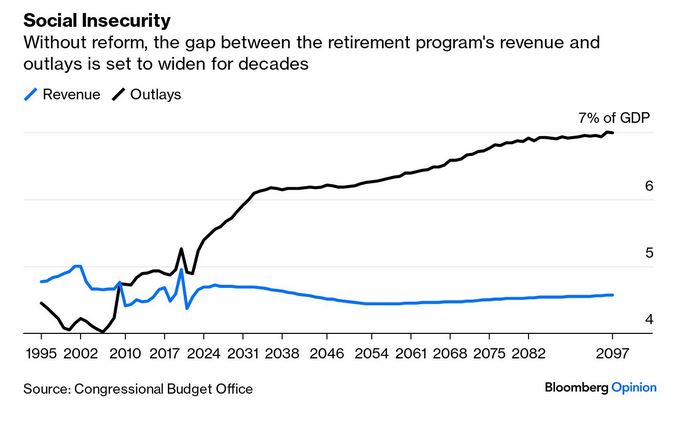 |
|
Luxury Electric Vehucules Crash / La voiture électrique de luxe a du
mal à s’imposer
|
03
- 13/11/2023
|
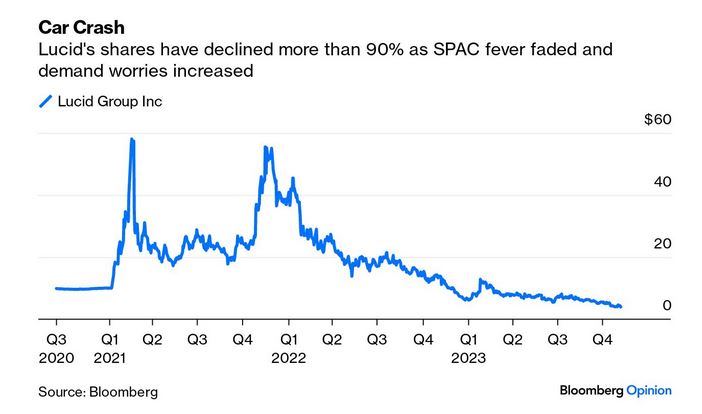 |
|
Nuclear Arms Race: USA Number 1 (Good News) / Course aux armements nucléaires
: USA bien armés et la France aussi (heureusement)
|
04
- 13/11/2023
|
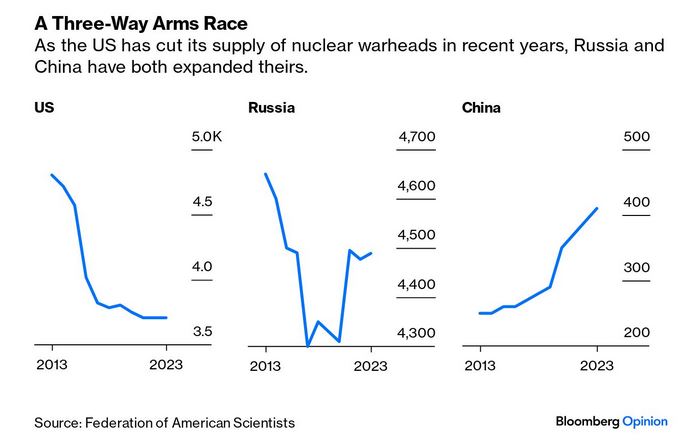 |
|
Sea Level Rise in NYC / Montée de la mer à New-York
|
05
- 13/11/2023
|
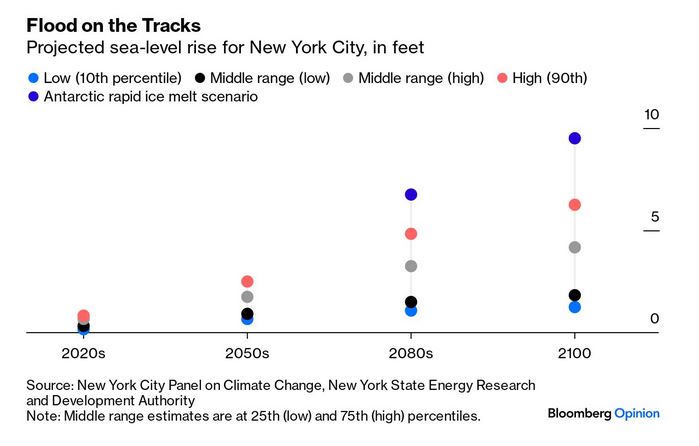 |
|
Dry Mississippi / Le Mississipi à sec
|
06
- 13/11/2023
|
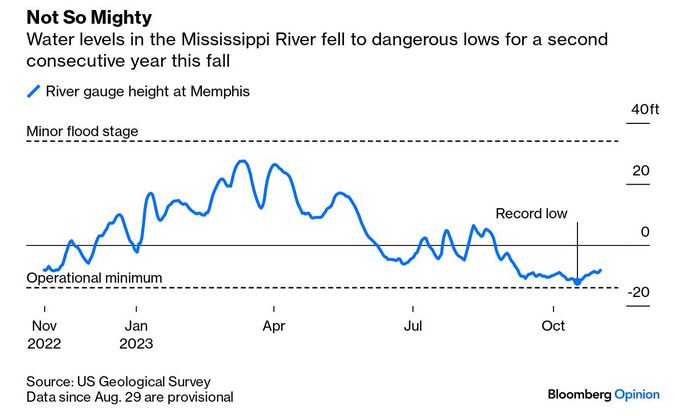 |
|
WeWork Losses / WeWork en faillite
|
07
- 13/11/2023
|
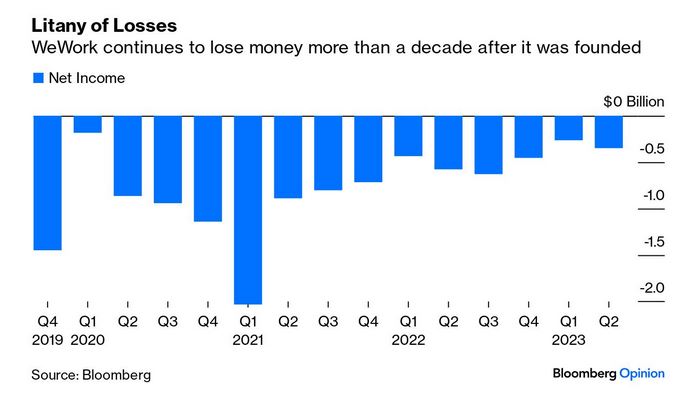 |
|
Democratic Dissatisfaction (here Democrat party) / En démocratie, nous
ne sommes jamais vraiment contents et encore moins jamais tous contents
|
08
- 13/11/2023
|
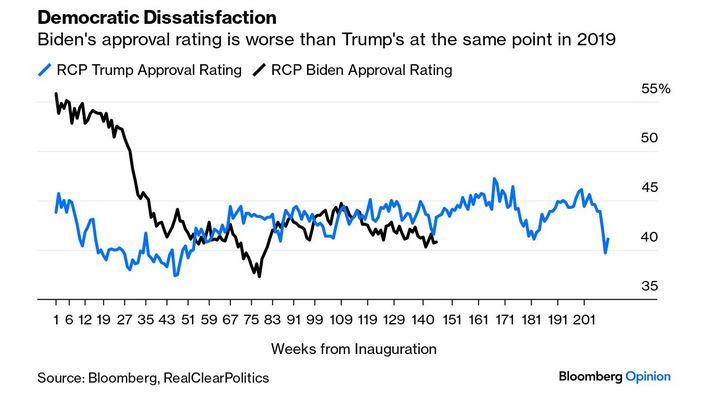 |
|
Japanese Dissatisfaction / Le mécontentement des Japonais
|
09
- 13/11/2023
|
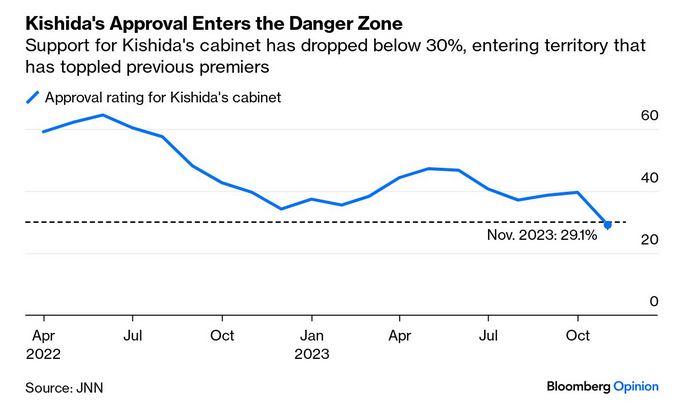 |
|
US Infant Mortality Rate Up (because of minorities, especially Indian
tribes) / Mortalité infantile en hausse, notamment à cause des peuples premiers,
autrement les tribus indiennes
|
10
- 13/11/2023
|
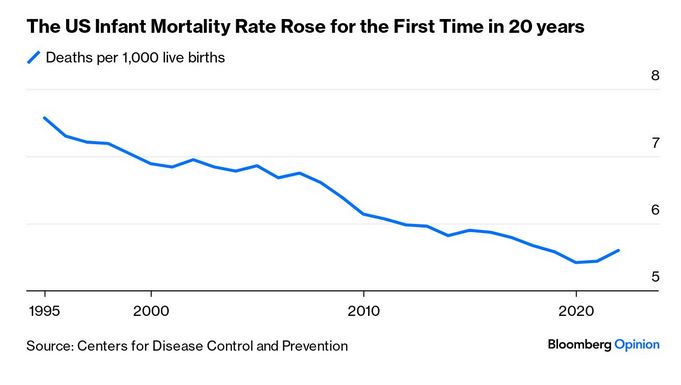 |
|
agfundersnews.com
Rantizo raises $6m series A expansion for spray drone services; enjoys
‘exponential growth’, October 2, 2023, by Elaine Watson
> Spray drone services provider Rantizo has raised a $6 million expansion
of its series A round (adding to the $7.5 million announced in 2020) led
by Leaps by Bayer, and supported by Fulcrum Global Capital and Innova
Memphis.
The capital injection will help the Iowa-based company expand its nationwide
operator network, which now works across 30 states with more than 20%
of the nation’s top 50 ag retailers.
We’ve seen demand for the service outstrip supply quite significantly’
Right now, CEO Mariah Scott tells AgFunderNews, drones account for “a
tiny fraction” of crop spraying, but that fraction “is growing exponentially.”
“So if you look at ground plus aerial applications, that’s probably around
a $10-11 billion market opportunity, and drones are a tiny fraction of
that today, but that’s a big market to go after.”
In many cases, says Scott, drones are used to compliment traditional ground
spraying systems for difficult-to-reach areas, soggy ground, or areas
where greater precision is required than can be delivered by manned aerial
spraying vehicles such as planes and helicopters.
“We’ve seen demand for the service outstrip supply quite significantly,
and we’ve had exponential growth in the number of acres sprayed year-on-year
for the last three years, because what ag retailers and growers are seeing
is that the drone is a timely and versatile tool.
“So on the timely front, it’s about being a local service provider, if
you have an issue they can get drones out there right away, which isn’t
always true with helicopters or crop dusters, which can be harder to schedule.
“As for versatility, if you have acreage with a lot of trees or waterways
or buildings or that is awkwardly shaped, the drone is a great tool because
you can fly very precisely. You’re also flying much closer to the crop,
so you don’t have the problems with drift or overspray. In cases where
you’ve had a lot of rain and you can’t get a ground rig in there, or you
have a crop that needs to remain irrigated, you don’t have to turn the
irrigation off.”
.../...
See
agfundernews.com
Can Web3-enabled tokens drive more smallholders in Kenya to adopt regenerative
ag practices? By Timothy Asiimwe, October 2, 2023
Timothy Asiimwe is the innovation project manager at Mercy Corps Ventures,
an active seed- and early-stage investor in emerging markets. The views
expressed in this guest commentary are the author’s own and do not necessarily
reflect those of AgFunderNews.
Smallholder farmers in Kenya produce up to 80% of locally produced food.
But that number masks the rapidly declining yields that many of these
farmers are experiencing because of diminishing soil health.
Several studies have shown that decades of conventional agriculture practices
such as synthetic input use, monocropping, and deep tillage have led to
a deterioration in the fertility of soils in Kenya. Though many are aware
of the benefits, smallholders are hesitant to transition to regenerative
practices because the payoff is not immediate and many have limited access
to regenerative inputs and services.
>>> The pilot
Mercy Corps Ventures has partnered with Farm Star to launch a new pilot
to test the use of Web3-enabled rewards that are interoperable and usable
with other ecosystem platforms to drive adoption of regenerative agricultural
practices amongst smallholder farmers in Kenya.
Farm Star is a leading distributor of organic fertilizer in Kenya with
a customer base of more than 10,000 smallholder farmers and a country-wide
network spanning over 1,000 resellers. Farm Star’s flagship product, Evergrow,
is a nutrient-rich, fully decomposed fertilizer made of 100% organic materials.
The company is a subsidiary of Sanergy (housed within the Regen Organics
division) and was recently recognized as a finalist of the Zayed Sustainability
Prize.
Farm Star is launching a customer loyalty program to encourage repeat
purchase behavior. Most loyalty programs only allow participants to “spend”
their points in pre-defined ways, but this design choice often limits
the attractiveness of reward points.
In this pilot, Web3 reward tokens, interoperable with third-party services,
give farmers flexible and additional ways in which they can use reward
points. Farmers who purchase Evergrow fertilizer will receive reward tokens
which can be redeemed for additional fertilizer or services/products from
other ecosystem partners, or even cashed out to fiat via M-PESA. For instance,
a farmer could eventually use their Farm Star rewards to purchase insurance
from ACRE Africa or even purchase products on Nuzo.
The loyalty platform will be available on both USSD menu as well as a
downloadable smartphone app. Each Evergrow bag will be labeled with a
unique identifier, which participating farmers and agrovets can input
into the app/USSD menu to redeem reward points.
By making the reward points interoperable, this pilot aims to increase
their value to the end users and augment the attractiveness of regenerative
agricultural products.
.../...
See
agfundernews.com
Farm robotics startups face a talent shortage. Academia and tech are
working together to change that, by Jennifer Marston
Startups have made strides in the last few years turning the theoretical
benefits of ag robotics and automation into actual realities for farmers.
But there’s still a ton of work to be done when it comes to making tools
that are complex enough for smart spraying and laser weeding, but don’t
also require a PhD to operate.
Ergo, startups will have a lot of new hires to make in the coming years,
many of them from the growing pool of talent coming out of college, said
many at the FIRA USA 2023 farm robotics show in Salinas, California.
Enter the annual Farm Robotics Challenge organized by the AI Institute
for Next Gen Food Systems (AIFS), University of California Agriculture
and Natural Resources (UC ANR) initiative the VINE, the Fresno-Merced
Future of Food (F3) coalition, and robotics company farm-ng.
.../...
See
agfundernews.com
Verqor lands $7.5m from Yara, Accion and others to offer farmers ‘the
fastest credit for agriculture in Mexico’, by Jennifer Marston
- Agrifintech startup Verqor has raised $7.5 million in funding to connect
more farmers with credit via its alternative underwriting process.
- Funding includes a $4 million pre-Series A led by Yara Growth Ventures.
Accion Venture Lab, SP Ventures, GLOCAL, and Amplifica Capital also participated.
- The remainder of the new capital comes via a $3.5 million debt round
from Co_Capital and Addem Capital.
- Verqor will use the capital to expand in Mexico as well as become a
direct financial lender to farmers and approve loan applications in “48
hours or less.”
See
agfundernews.com
Ag Biotechnology investment surges in Asia-Pacific as funding swims
upstream, November 1, 2023, by Jennifer Marston
Despite an overall decline in funding to the region last year, some Asia-Pacific
startups are seeing an increase in new VC capital (venture capital).
| |
The
Efita newsletter is sponsored by:

|
Earth just had its hottest year on record
Over the past 12 months, the average global temperature was 1.32 ℃
above the pre-industrial baseline, and one-quarter of people experienced
dangerous levels of extreme heat, according to a report by the non-profit
organization Climate Central.
The European Union’s Copernicus Climate Change Service predicts that 2023
will be the warmest calendar year on record. “This is the hottest temperature
that our planet has experienced in something like 125,000 years,” says climate
scientist Andrew Pershing, vice-president for science at Climate Central.
Most of this warming, about 1.28 ℃, is the product of human impacts.
Natural variations caused by processes such as the ongoing ocean-warming
event El Niño contributed much less, says climate researcher Friederike
Otto.
A peasant wedding in the Tambov Region (Russia), 1880, by Andrei Ryabushkin
(1861-1904)
|
05
- 13/11/2023
|
 |
|
A lad has wormed his way into the girl's round dance, 1902, by Andrei
Ryabushkin (1861-1904)
|
06
- 13/11/2023
|
 |
|
Podcast: How ChatGPT will change research
Generative artificial intelligence (AI), such as the chatbot ChatGPT,
is already transforming research and scientific publishing — for better
and for worse. Nature editor-in-chief Magdalena Skipper, journalist and
features editor Richard Van Noorden and Yann Sweeney, the editor responsible
for AI-related manuscript submissions at Nature, join host Nick Petrić
Howe to discuss how these AIs are affecting science and what the future
might hold.
See nature.com
Plan to breed domestication out of wildcats
Researchers trying to rebuild the Scottish wildcat (Felis silvestris)
population are gaining insights from ancient genomics. At a remote wildlife
park in the Scottish Highlands, a captive-breeding programme is considering
an audacious breeding strategy to eliminate the house-cat DNA that has
infiltrated the wildcat genome.
To help them to unpick the problem, researchers analysed the genomes of
dozens of ancient and modern cats, including the 2,000-year-old remains
of a domestic cat found at a Roman palace in West Sussex and those of
a wildcat that died 600 years ago, uncovered at a now-ruined castle in
the north of England.
|
|
 |
|
Ryanair profitable (business as usual) / Ryanair rentable
|
11
- 13/11/2023
|
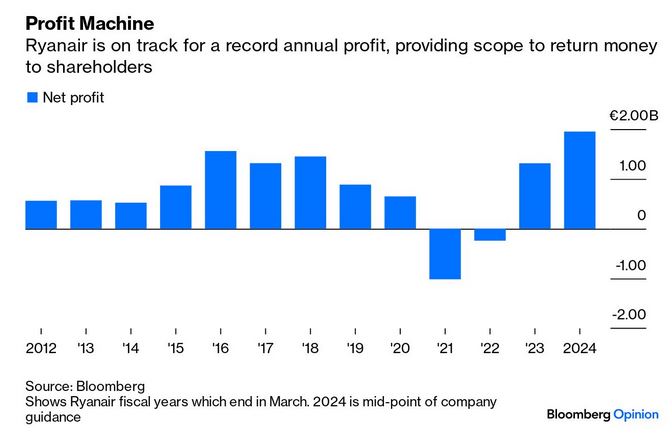 |
|
CO2 emissions per dolllar of GDP / Plus on est riche, moins on émet de
CO2
|
12
- 13/11/2023
|
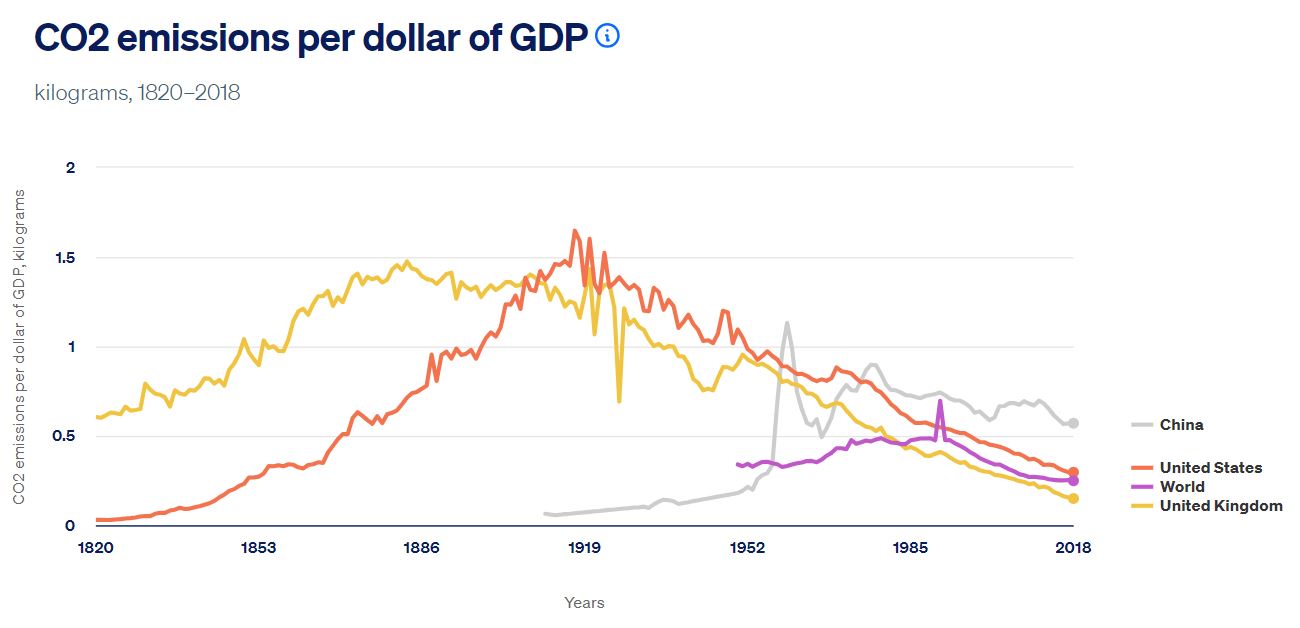 |
|
Where are the jobs? / Où sont les emplois pour les étudiants de la Columbia
Business School ?
|
13
- 13/11/2023
|
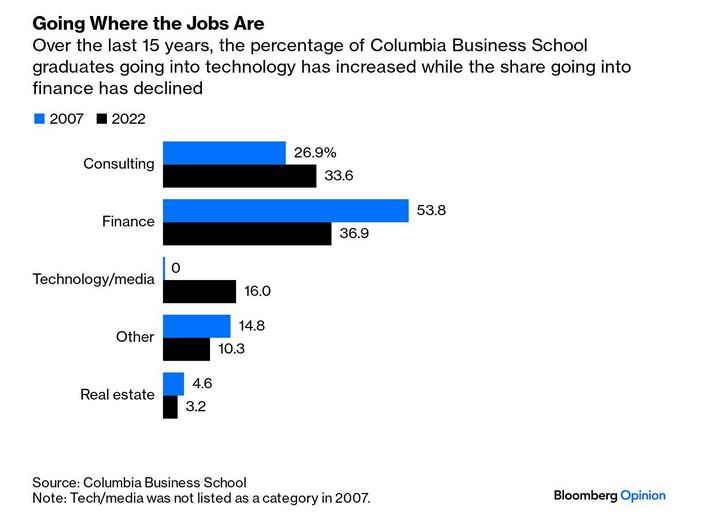 |
|
Restaurant Productivity Up / Augmentation de la productivité dans les
restaurants
|
14
- 13/11/2023
|
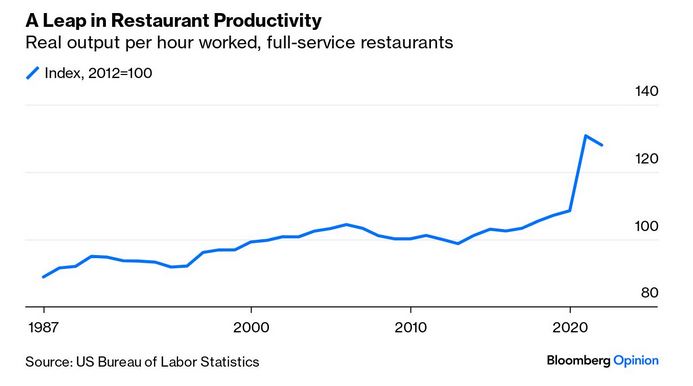 |
|
US Wages Up / Salaires en hausse aux USA
|
15
- 13/11/2023
|
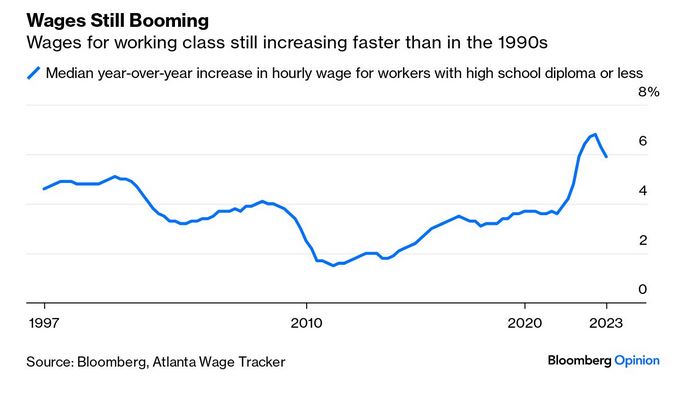 |
|
More EV / Toujours plus de voitures électriques
|
16
- 13/11/2023
|
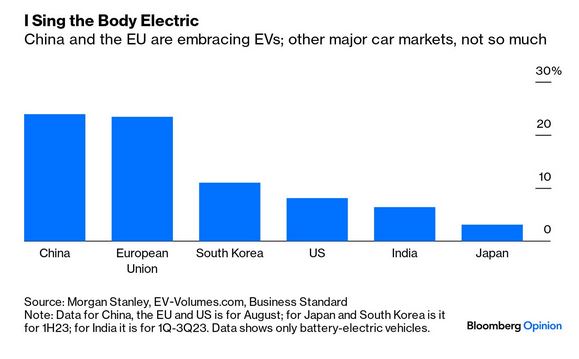 |
|
Into cryptocurrency hell / Dans l'enfer des cryptomonnaies
|
17
- 13/11/2023
|
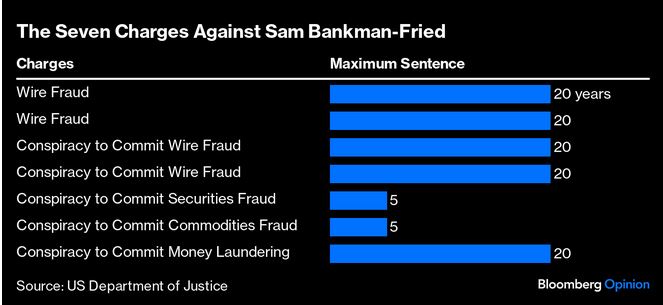 |
|
Inflation down, growth too / L'inflation baisse, la croissance aussi
|
18
- 13/11/2023
|
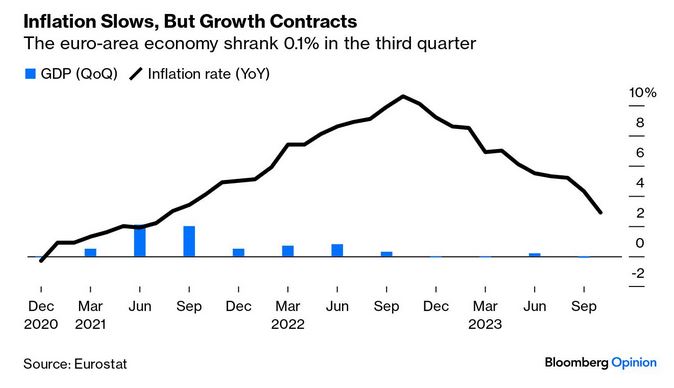 |
|
US People more and more stressed / Les Américains toujours plus stressés
|
19
- 13/11/2023
|
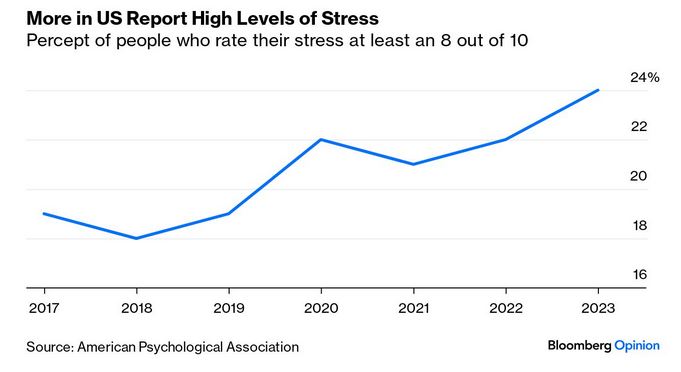 |
|
Ukraine rotten by Russian mines / Ukraine pourrie par les mines russes
|
20
- 13/11/2023
|
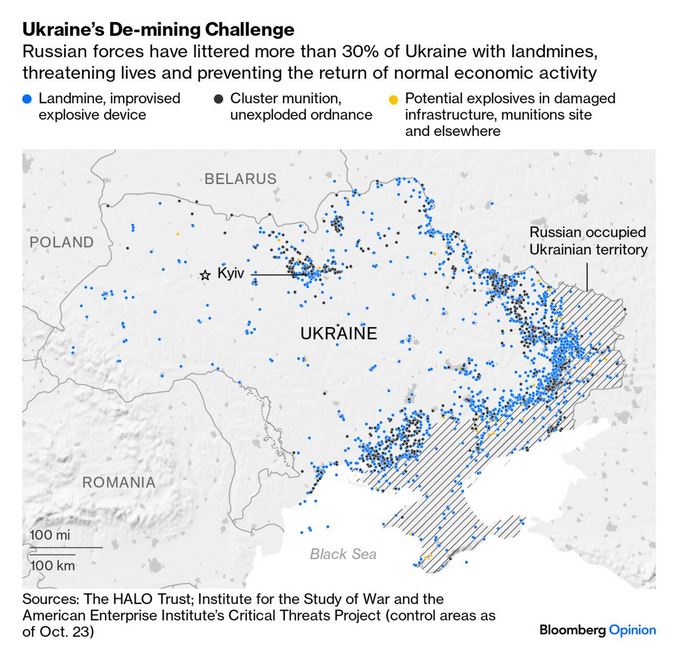 |
|
Study: A controllable variable has key impact on sweet corn yields,
August 25, 2023
A new analysis from the University of Illinois Urbana-Champaign and the
Agricultural Research Service has identified the top factors accounting
for yield variability in processing sweet corn, including one within the
control of processors — seed source.
“We used a very robust approach to account for sweet corn yield with field-level
data across some 16,000 fields and 27 years. Year and production region
were the two most important variables, which makes logical sense. But
the third was seed source: the company that developed the hybrids. That’s
interesting because it’s actually something the industry has a choice
over,” said senior study author Marty Williams, ARS ecologist and affiliate
professor in the Department of Crop Sciences.
The analysis drew from confidential industry data on 67 variables relating
to crop genetics, management, weather, and soil factors from fields in
the Upper Midwest and Pacific Northwest, where most of the nation’s processing
sweet corn is grown. Williams and co-author Daljeet Dhaliwal, who completed
his doctorate in the Department of Crop Sciences, used machine learning
techniques to narrow down which of the dozens of factors correlated most
strongly to yield across nearly 30 years.
.../...
See
Agdaily.Com
5 of the coolest innovations I saw in Senegal, by Bill Gates, November
02, 2023, 5 minute read
I got to meet with amazing scientists working on the next big breakthrough
while I was in Dakar.
I had an amazing trip to Senegal last month. I always love getting the
chance to travel and see the remarkable work the foundation’s partners
are doing firsthand. These visits leave me more energized than ever to
go to work every day—and my time in Senegal was no exception.
Senegal is a particularly interesting country to visit, because it has
made exemplary progress improving the health of its people thanks to a
focus on community-led care and many years of smart policymaking. Some
of the statistics are mind-blowing: Since 1992, the country has cut its
stunting rate in half. Since 2000, the number of Senegalese children who
die before their 5th birthday has dropped by 70 percent. And since 2005,
the number of women giving birth in health facilities has increased from
62 percent to 80 percent. It’s the perfect place to talk about progress.
One of the highlights of my visit was a trip to the Institut Pasteur de
Dakar, or IPD—a research center that has been pushing the frontiers of
global health for nearly a century. The facility does it all: IPD plays
a key role in monitoring for disease outbreaks in the region; produces
millions of diagnostics every year; serves as an educational hub for the
next generation of health workers and biomanufacturing workers; and will
soon resume manufacturing vaccines.
.../...
See
gatesnotes.com
In the village, 1902, by Andrei Ryabushkin (1861-1904)
|
07
- 13/11/2023
|
 |
|
Haystack, 1901, by Valentín Serov (1865-1911)
|
08
- 13/11/2023
|
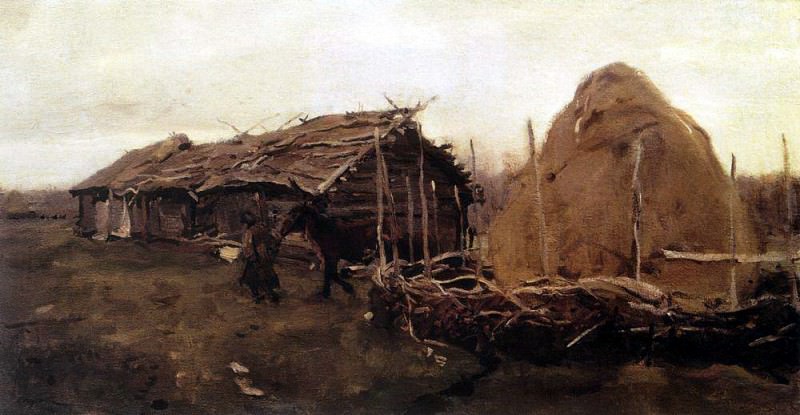 |
|
Need for a 'humanitarian truce' in Gaza... and need for the release
of Israeli hostages held by Hamas / Besoin d’une trêve humanitaire à Gaza
et besoin de libération par le Hamas de ses otages israéliens
|
21
- 13/11/2023
|
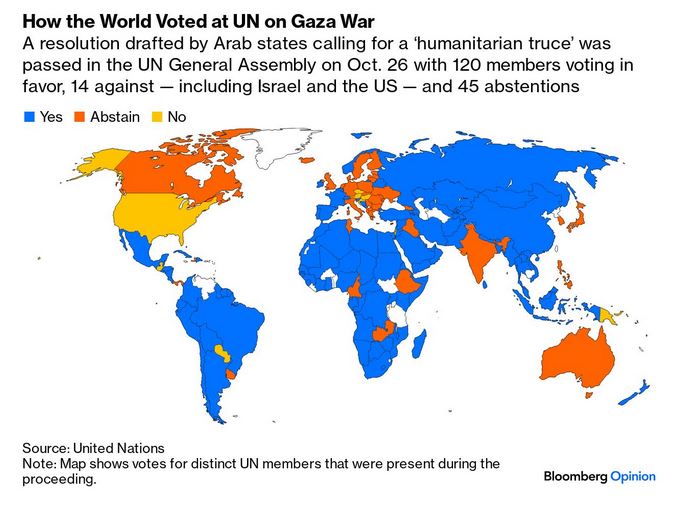 |
|
Walls again / De plus en plus de murs entre nos pays
|
22
- 13/11/2023
|
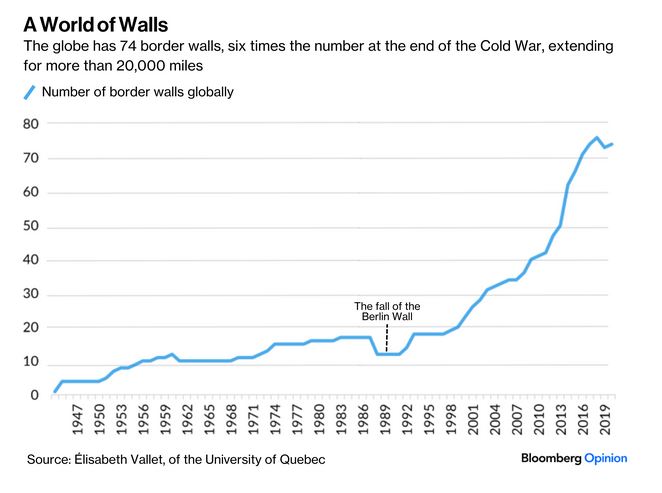 |
|
Unfinished Chinese constructions, a human and economical drama / Les
immeubles non-terminés en Chine, un drame humain et économique
|
23
- 13/11/2023
|
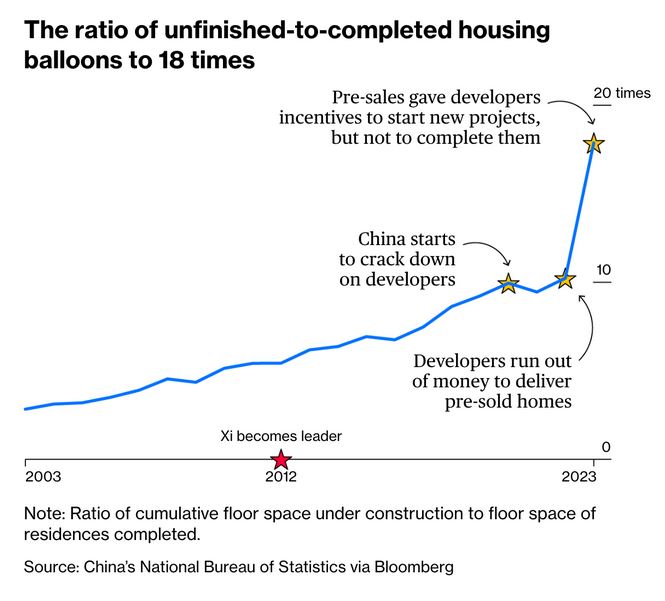 |
|
Rich Chinese richer than ever / Les riches chinois plus riches que jamais
(beauté du socialisme vu par les chinois)
|
24
- 13/11/2023
|
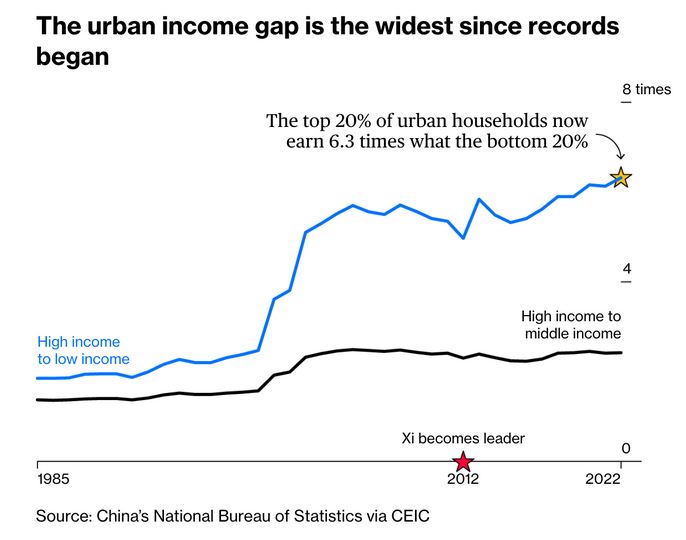 |
|
Monthly Subscription Fees / Vos abonnements ?
|
25
- 13/11/2023
|
 |
|
Better late than never: Bangladesh finally introduces Bt cotton after
years of dilly-dallying, by Reaz Ahmad, October 12, 2023
.../...
Scientists involved in agro-biotech product development in Bangladesh
find it painful that regulators sit on their decisions for years without
assigning much of a reason. Biotech regulators at different tiers don’t
hold their scheduled meetings. As a result, scientists miss out on seasons
and have to wait for the next season, next year, to go for field tests
and other necessary trials.
These act as disincentives – a likely reason why hundreds of Bangladeshi
agricultural scientists leave the country for better pro-science ecosystems.
There appears to be no hesitance from the growers or consumers in appreciating
biotech-derived agricultural products in Bangladesh. The rapid expansion
of Bt brinjal over the past ten years and consumers’ acceptance of the
crop is a testament. Even before any biotech crop approval in Bangladesh,
consumers had already accepted GM soybean oil, one of the country’s most
popular cooking oils.
There is a range of other biotech products in the approval queue or at
different stages of development at various premier agricultural research
stations, but regulatory inertia appears counterproductive. Bangladeshi
scientists are still working on iron and zinc-rich rice, biotech potatoes,
tomatoes, and blast-resistant wheat.
See
allianceforscience.org
From potential to progress: Latest developments in Golden Rice deployment
in the Philippines
In the Philippines, about two million children under five are at risk
of vision issues and weak immune systems. These symptoms are consequences
of diets lacking in Vitamin A. This number is equivalent to one out of
five Filipino children from the less fortunate communities in the country
with Vitamin A deficiency (VAD). This preventable nutritional problem
impacts the Philippines and an estimated 190 million children globally.
Several initiatives have addressed this problem, including supplementation,
diversified diet, and food fortification. Yet, many are still being missed.
One of the complementary solutions to these initiatives is now in the
hands of Filipino farmers—a healthier kind of rice known as Golden Rice.
This effort was initiated in 1982 by Dr Ingo Potrykus of the Swiss Federal
Institute of Technology and Dr Peter Beyer of the University of Freiburg,
Germany, and aimed to address VAD by developing a kind of rice that can
provide Vitamin A in the diet.
.../...
See
allianceforscience.org
Perspective: IARC relishes stirring the pot with thin science, by Amanda
Zaluckyj, July 21, 2023
.../...
Aspartame is an artificial sweetener found in a variety of foods and beverages,
like diet sodas and chewing gum. It provides a sweet flavor without the
calories associated with sugar. Although some people complain of side
effects like headaches and dizziness, the Food and Drug Administration
has concluded that aspartame is safe for most people to consume in moderation.
Most importantly, it doesn’t cause cancer.
.../...
See
agdaily.com
"Bad"
Joke
Op-ed: Biofuels don't steal land from food producers, by AGDAILY contributors,
September 06, 2023
Food insecurity continues to be a problem for the world — and it’s a problem
that’s getting worse. According to the World Bank , the number of people
facing moderate to severe food insecurity topped 2 billion in 2022. Logic
tells us that we need to grow as much food as possible — but a good deal
of arable land is used to grow crops that end up not as food, but as feedstock
for biofuel production.
Globally, at least 8 percent of agricultural land is used to grow biofuel
feedstock, mainly for biodiesel and ethanol; in the U.S., nearly half
of corn production is used in ethanol production. On the other hand, biofuels
help reduce greenhouse gas emissions — in some cases by over 80 percent,
depending on the feedstock used. And according to studies, biofuel based
gas and diesel could replace as much as half the amount of petroleum-based
fuels now in use — a prospect that should be taken seriously as a path
to reducing carbon dioxide and greenhouse gas emissions.
The world definitely needs more food — yet we can’t afford to increase
pollution in order to produce it. Biofuel technology is a proven and effective
way of doing that. But we don’t have to make a choice here; instead of
using prime agricultural land, biofuel feedstock can be grown in vast
swathes of “marginal” agricultural land that is currently used for food
production.
See
agdaily.com
Flooded and forgotten: How Europe's disused coal mines are successfully
being used to heat our homes
Abandoned coal mines are providing a surprisingly potent source of zero-carbon
energy in Europe.
An old coal mine has been providing an English town with green energy
for the last six months.
The ground-breaking project in Gateshead is using the warm water that
has filled the tunnels to heat hundreds of homes and businesses in the
former coalfield community.
Hailed a success, the UK’s first large-scale network shows the huge potential
to be found in the nation’s sprawling warren of old mining tunnels, which
sit beneath roughly a quarter of homes.
.../...
See
euronews.com
How did Uruguay cut carbon emissions? The answer is blowing in the
wind, October 6, 20232, by Erika Beras, Amanda Aronczyk, Keith Romer,
Willa Rubin
Ramón Méndez Galain was Uruguay's National Director of Energy from 2008
to 2015. His plan for the energy sector led to 98% of Uruguay's grid being
powered by green energy. And a good deal of that comes from wind energy
— from turbines.
See
npr.org
Do voters like moderate messages more? Some new tests of a Slow Boring
theory, by Matthew Yglesias, 30 oct. 2023
When the Biden administration decided to approve the Willow oil extraction
project in Alaska, I defended their decision on the merits.
Addressing climate change is important, but trying to address climate
change through supply constriction has a very unfavorable cost-benefit
profile. I’m all for demand-side policies (like a carbon tax) and efforts
to facilitate clean energy deployment (like the IRA). But blocking Willow
wouldn’t have made sense as climate policy, and the local environmental
case against it wasn’t very strong either. Willow was supported by Alaska
labor groups, by most Alaska indigenous groups, but Alaska’s Democratic
House member, and by both of its Republican senators (including Lisa Murkowksi,
who is a reasonable person). Under the circumstances, I thought Biden
clearly did the right thing and could use some people saying so in the
face of inevitable climate criticisms.
What’s interesting is that Biden did not defend this call on the merits.
Instead, he said:
My strong inclination was to disapprove of it across the board but the
advice I got from counsel was that if that were the case, I may very well
lose that case in court to the oil company and then not be able to do
what I really want to do beyond that.
This reflects a broader set of messaging decisions that I find somewhat
odd. My sense is that traditionally, politicians try to make themselves
sound more moderate than they are. Barack Obama often insisted that his
policies were just common sense or based only on the evidence, untouched
by ideology. Donald Trump would lie and say he cared passionately about
clean air and water, even as his EPA eased up on these rules. Regardless
of how the internal debate over Willow really went, once you decide you’re
not going to block it, why not position yourself as moderate? When accused
of strangling American oil production, the White House will mention that
actually, output is at an all-time high, but it’s never something they
brag about as part of Bidenomics. But why not put forward the most moderate
possible face?
My tendency when talking about this stuff has been to assert that for
any given policy, a more moderate frame is more popular. But is that true?
I partnered with a public affairs group to conduct a few message tests
and their data suggests that, yes, if you are going to build a wall and
approve oil projects, you may as well claim credit for it.
.../...
See
slowboring.com
Provectus Algae seeks to disrupt livestock methane reduction space
with a change in 'the cost of goods’, by Jennifer Marston
Provectus Algae is entering the livestock methane reduction market with
an indoor growing system it claims transforms the unit economics of growing
Asparagopsis (red seaweed) for feed additives.
The Queensland-based startup has just opened a 30,000-liter demonstration
plant for growing Asparagopsis, which can scale up to 160,000 liters,
with construction of a larger-scale facility planned in 2024.
By 2025, Provectus aims to supply Asparagopsis extracts to over 250,000
animals, reducing enteric methane emissions by 500,000+ metric tons of
CO2 equivalent annually.
…./…
See
agfundernews.com
VCs bet on ag biotech & farmtech as the new stars of Asia-Pacific’s
agrifoodtech ecosystem, October 26, 2023, by Jennifer Marston
Asia-Pacific has long been a hotbed for agrifoodtech innovation. That’s
unlikely to change, despite the recent drop in agrifoodtech funding to
the region.
Investment in Asia-Pacific agrifoodtech startups reached $6.5 billion
in 2022, a 58% year-over-year decline on 2021’s record-breaking year,
according to the new Asia-Pacific Agrifood Investment report from AgFunder
in collaboration with the Bill & Melinda Gates Foundation, Omnivore
and AgriFutures Australia.
While funding levels in 2023 are down on 2022, the ecosystem is still
very active with a similar number of deals closing during the first half
of this year compared to H1 2022.
And though the decline is in keeping with broader macro trends, it’s only
part of the story for Asia-Pacific agrifoodtech investment.
A far more interesting narrative is the emergence of upstream technologies
— those close to the farm or lab — as the new star of the region’s agrifoodtech
sector.
.../...
... Farm Management Software, Sensing & IoT ($334m), Farm Robotics
($252m) and Novel Farming Systems startups ($254m), which include indoor
farming and aquaculture and insect farming, brought in more funding across
fewer deals.
See
agfundernews.com
Domotkanovo, 1886, by Valentín Serov (1865-1911)
|
09
- 13/11/2023
|
 |
|
Winter Road to Domotkanovo, 1904, by Valentin Serov (1865-1911)
|
10
- 13/11/2023
|
 |
|
Because of a small insect… British couple in Egypt ‘died of carbon monoxide
poisoning’, inquest hears, by Nadeem Badshah, 9 Nov 2023
Pathologist gives cause of death of John and Susan Cooper, whose hotel room
was next to one being treated for bedbugs.
A statement from Dominik Bibi, a German tourist, read at the inquest on
Tuesday said there had been a bedbug infestation in the room next door to
the Coopers.
It was then treated with the pesticide, referred to as Lambda, at lunchtime,
with the Coopers falling ill in the early hours and dying the next day.
Prof Robert Chilcott told the hearing he detected the presence of carbon
monoxide in blood samples from the bodies of the couple.
Home Office pathologist Dr Charles Wilson gave a cause of death for John
Cooper as carbon monoxide toxicity and heart disease, and for Susan Cooper
carbon monoxide toxicity.
Dr Wilson said: “What you have here is a situation whereby the trajectory
of the Coopers’ deaths, the circumstances surrounding it, how that evolved
is not compatible with natural disease.
“It is typical of something in the environment and carbon monoxide is a
common environmental toxin. It shows lots of features I would expect to
see in carbon monoxide poisoning.
“It’s exactly what I would expect to see in people poisoned by carbon monoxide.”
Dr Wilson added that someone with cardiovascular disease, like John Cooper,
would find it more difficult to withstand carbon monoxide poisoning.
Prof Chilcott, a toxicology expert, told the hearing carbon monoxide was
present in the blood samples from the bodies but he could not be certain
of the levels.
.../...
|
|
 |
|
China’s carbon emissions set for structural decline from next year,
by Jillian Ambrose, Energy correspondent, 13 Nov 2023
Emissions by world’s most polluting country could peak this year after
surge in clean energy investments.
|
|
 |
|
Better waste management is key to ending plastic pollution
Crucial to ending plastic pollution is improving waste management strategies.
It’s a solvable problem, and making a difference here would do much more
to reduce plastic pollution than even considerably decreasing the production
of plastic. Even if the world used half as much, we’d still have significant
amounts of plastic flowing into our rivers and oceans.
To end plastic pollution, waste needs to be adequately managed. Around
one-fifth of plastics are still mismanaged, meaning they are not recycled,
incinerated, or kept in sealed landfills.
The amount of mismanaged plastic waste varies across the world, but tends
to be much higher in low-to-middle-income countries. This is shown in
the chart here in per capita terms.
Domestic policies to improve waste management will be crucial, but richer
countries can also contribute through foreign investments in waste management
infrastructure.
On our new topic page, you can find all of our data, visualizations, and
writing on plastic pollution.
|
|
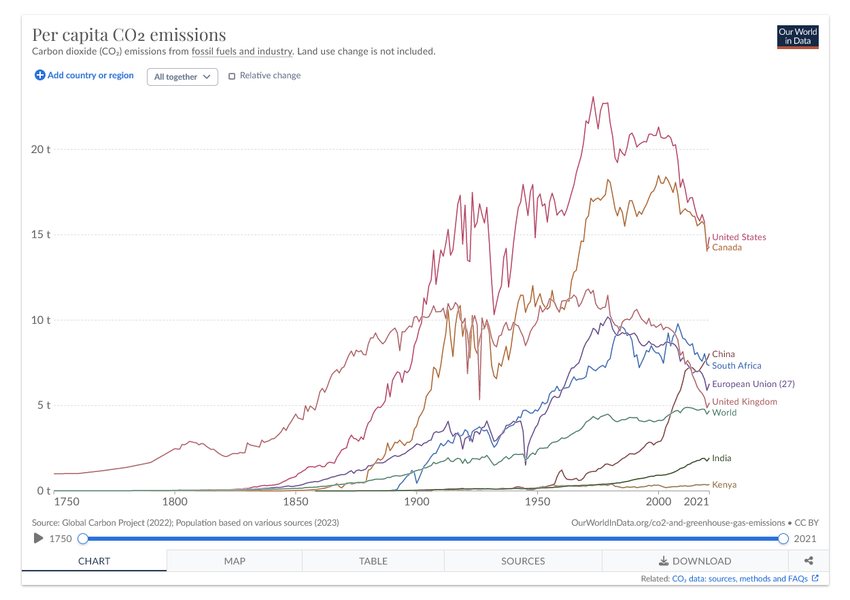 |
|
The world has made substantial progress in increasing basic levels
of education
Access to education is now seen as a fundamental right. In many cases,
it’s the government’s duty to provide it.
But formal education is a very recent phenomenon. In the chart here, we
see the share of the adult population — those older than 15 — that has
received some basic education, and those who haven’t.
In the early 1800s, fewer than 1 in 5 adults had some basic education.
Education was a luxury; in all places, it was only available to a small
elite.
But you can see that this share has grown dramatically, such that this
ratio is now reversed: fewer than 1 in 5 adults has not received any formal
education.
This is reflected in literacy data, too: 200 years ago, very few people
could read and write. Now, most adults have basic literacy skills.
Explore our data, visualizations, and writing about global education on
our new topic page.
|
|
 |
|
The Human Development Index and related indices: what they are and
what we can learn from them
Measuring human development helps us understand how people’s lives and
livelihoods vary across the world and how they have changed over time.
Several prominent measures try to capture these changes, such as the Human
Development Index (HDI) shown in the chart here.
All of the measures seek to broaden the scope of development beyond simply
economic growth, and to capture other key metrics that track peoples’
standards of living.
However, measuring human development comes with many challenges. People
do not always agree on what should be included. And even once defined,
some features of human development are difficult to measure.
So, how do these indices track human development? And what can we learn
from them?
In this article, we summarize the similarities and differences between
the different approaches and how to decide on which one to use.
|
|
 |
|
People around the world have gained democratic rights, but some have
many more rights than others
Two hundred years ago, everyone lacked democratic rights. Now, billions
of people have them.
But there are still significant differences in the degree to which citizens
enjoy political rights, most clearly between democracies and non-democracies,
but also within these broad political regimes.
To understand the extent of people’s political rights, we shouldn’t look
only at whether a country is classified as a democracy. We should also
look at more minor differences in how democratic countries are.
In this article, we do just that: We use data on the extent of democracy
to compare how democratic countries have been over the last two centuries.
|
|
 |
|
Rabbi fill in
A Catholic priest is called away by a family emergency one day, while
on duty attending confession.
Not wanting to leave the confessional unattended, he asks his friend,
a rabbi from the synagogue across the street, if he can fill in for him.
The rabbi says he wouldn't know what to do, so the priest agrees to stay
with him for a few minutes and show him the ropes.
They enter their half of the confessional together and soon enough, a
woman enters and says, "Father forgive me, for I have sinned."
"What did you do?" asks the priest.
"I have committed adultery," she replies.
"How many times?" continues the priest.
"Three times."
"Do three Hail Marys, put $5 in the poor-box, and sin no more,"
finishes the priest.
The woman leaves and not long after a man enters and says, "Father
forgive me, for I have sinned."
"What did you do?"
"I have committed adultery."
"How many times?"
"Three times."
"Do three Hail Marys, put $5 in the poor-box, and sin no more."
The man leaves.
The rabbi tells the priest he thinks he's got it figured out now, so the
priest leaves, and the rabbi waits until another woman enters the confessional,
who says, "Father forgive me, for I have sinned."
"What did you do," asks the rabbi.
"I have committed adultery," she replies.
"How many times?"
"Twice."
"I tell you what," says the rabbi. "Go do it one more time
and come back. We got a special this week, three for $5!"
The creation of this efita newsletter is sponsored by Acta Digital
Services and its distribution by vitisphere.com
Please, contribute to the content of your efita newsletter, and advertise
your events, new publications, new products and new project in this
newsletter. Without your support, it will not survive!
Contact: Guy WAKSMAN
E-mail: guy.waksman(a)laposte.net
To read this newsletter on our web site
See Efita
The archives of this newsletter
See Efita
About the EFITA mailing list
You can use the efita moderated list (> 15000 subscribers) to announce
any event / product / web site / joke (!) related to IT in agriculture,
environment, food industry and rural areas.
If you want to subscribe a friend, please fill in his
form.
If you do not wish to receive our messages, please fill in the following
form...
|


















